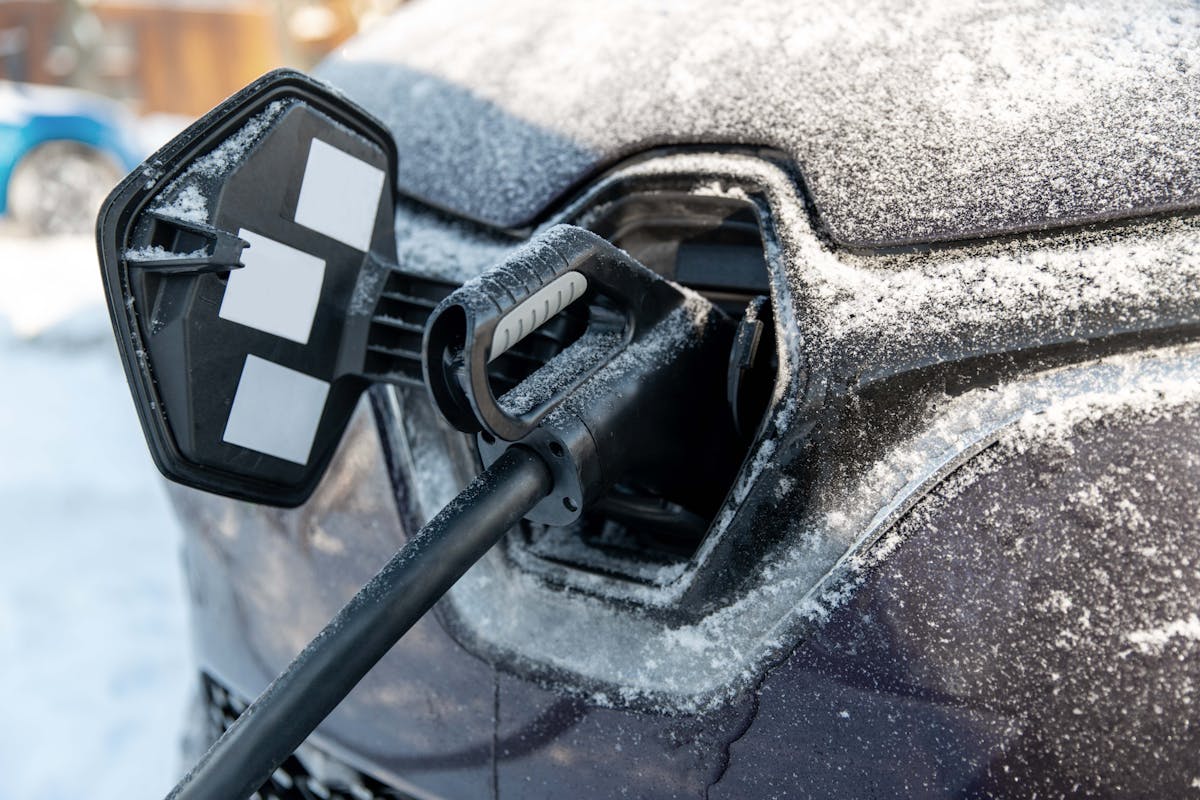Why do EVs charge slower in colder weather?
Temperatures, both hot and cold, can affect your electric car's battery.
After surviving a scorcher of a British summer this year, we are now ready to embrace the cosy season. However, with seasonal changes comes fluctuations in the efficiency of your electric vehicle’s battery. As summarised in our earlier blog, weather, and temperature changes i.e., ambient temperatures, can limit your EV’s range.
EV batteries have an optimum temperature of around 20-25 degrees where they will work to ideal efficiency. Charging in extreme temperatures affects the chemical reaction and the transfer of energy in the battery, with cold weather tending to be worst. We want to highlight these limitations so that you can manage your expectations and make sure your vehicle is performing to your specific requirements.
Low temperatures.
Where there are low ambient temperatures in the winter months, you can expect to lose around 10-15% range, and when a heating system is in use there is a potential to lose another 10%. [i]
Newer EV models tend to have internal thermal management systems within the battery, which are activated when driving and charging in cold weather. This functionality uses up some power and therefore may reduce the EV’s range and charge rate to bring the battery up to optimum temperature. However, when charging, once your battery’s temperature is up to the optimal range, the battery management system will remove its charging limits and you should see a higher charge rate as normal.
Older models, like the Nissan Leaf, may not have heating systems within their batteries, so various factors influence your EV’s range, including how old the battery is, how hard you are driving (which warms the battery) before topping up at a charger, and the specific chemistry of the battery.
All the above effects are not including when a heater is used to increase the cabin temperature. When using the cabin heating system, you can lose up to 40% of your range. [ii]

Effects on the expected EV battery efficiency.
It’s not all bad though, as taking the correct precautions can help to minimise the effects of lower temperatures.
Use seat and steering wheel warmers over your heater.
Rather than using your cabin heating system, you can opt to use only your car’s seat and steering wheel warmers. These features use a lot less energy compared to attempting to warm the entire vehicle.
Use your EV’s app to warm up your car before getting in.
Most EVs come with an app that has a feature whereby you can warm your EV’s cabin before you embark on your journey. This will help create a more comfortable cabin temperature whilst also warming the car’s battery to an efficient level.
Keep your battery’s State of Charge (SoC) above 20%.
The Battery Management System (BMS) within your car safely regulates your charging speed. With low temperatures, your BMS stores a proportion of the battery power to warm itself up. So, the best practice would be to try to keep your battery SoC above 20%* to ensure the battery has enough reserve to keep your car’s performance as optimized as possible.
Ask your car dealer or check your EV’s Manual for further best practices for your specific model.
High temperatures.
In Britain, you will be aware of the equivocal summer weather, but with July and August exceeding the temperatures of Dubai this year, we know that many would have endured the slower charge rate when using a public rapid.
No doubt with the peaking temperatures, you will be racing to turn on your air conditioning to cope with the heat on your journey, but this feature has a considerable impact on your EV’s battery capacity. [iii]
This is due to the additional energy that is required to control the cabin temperature when using this function, which results in less available energy to power the vehicle. In turn, you may notice your car having a shorter range in these temperatures, due to the battery system working harder to maintain the cooler cabin temperatures. This is an indirect reason for the reduced range in hot weather.
However, there are direct implications of heat, and to manage the range-limiting effects of heat we suggest these tips:
Avoid driving during peak temperatures.
In high temperatures the vehicle has to cool the battery back to optimum levels to protect it, using up some of your battery power to do this. Avoiding driving between 12 pm – 3 pm will enable you to get the most out of your EV’s range.
Park in the shade.
Park in a shaded spot where possible or use a windscreen sunshade to protect your car from increasing in temperature (and hence again having to use up power cooling the battery).
Charge to 80% on a public rapid.
Only charge to 80%, as charging above this state of charge (SoC) with high external temperatures results in the car pulling a prolonged, low charge rate in order to protect the battery from overheating.
Long-term effects on your battery.
Thankfully ambient temperatures won’t harm your EV’s battery and will only affect your EV’s range short-term, which will return to normal with the change of seasons. However, we suggest taking the relevant suggested precautions when planning long journeys and charging your car in extreme weather conditions.




